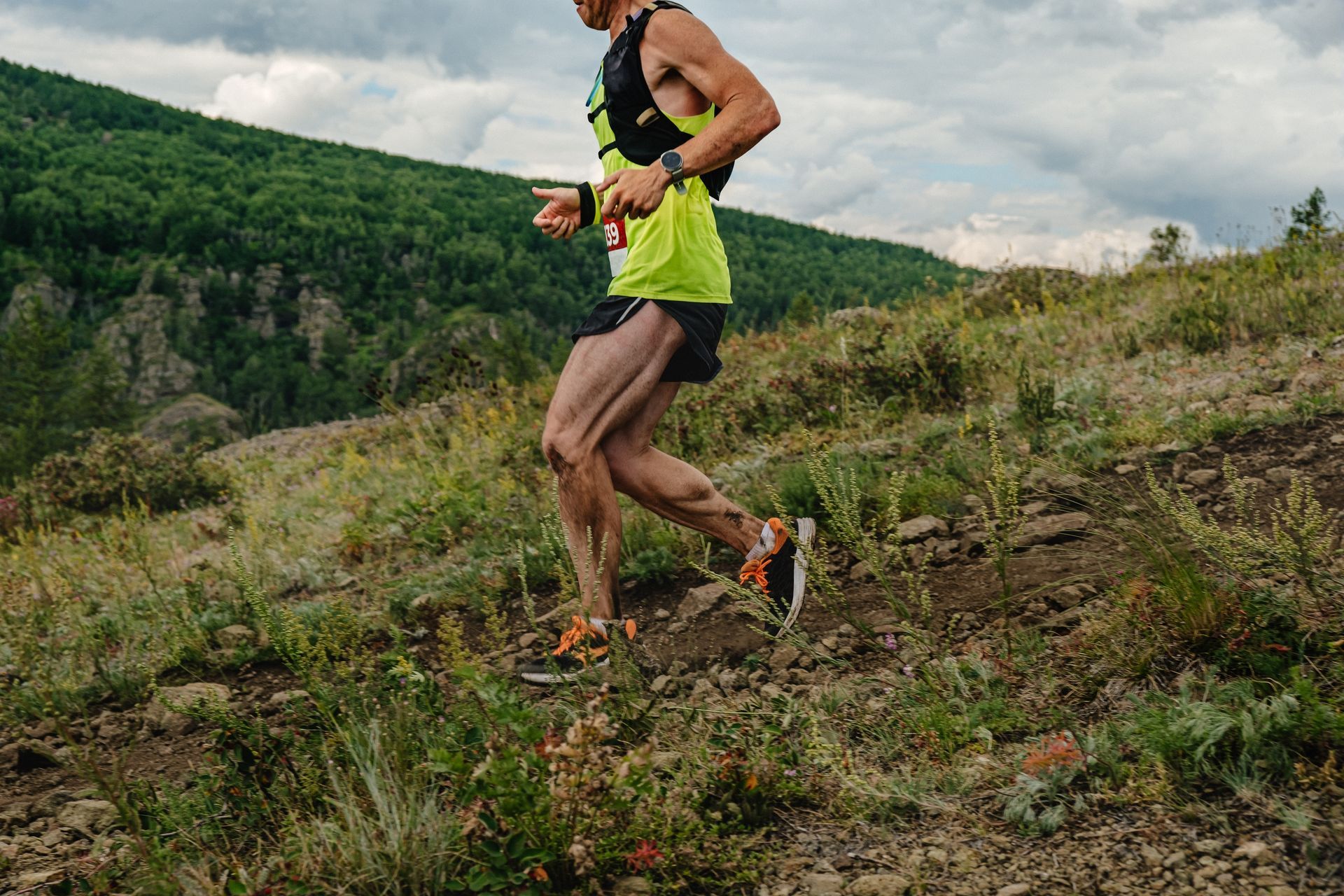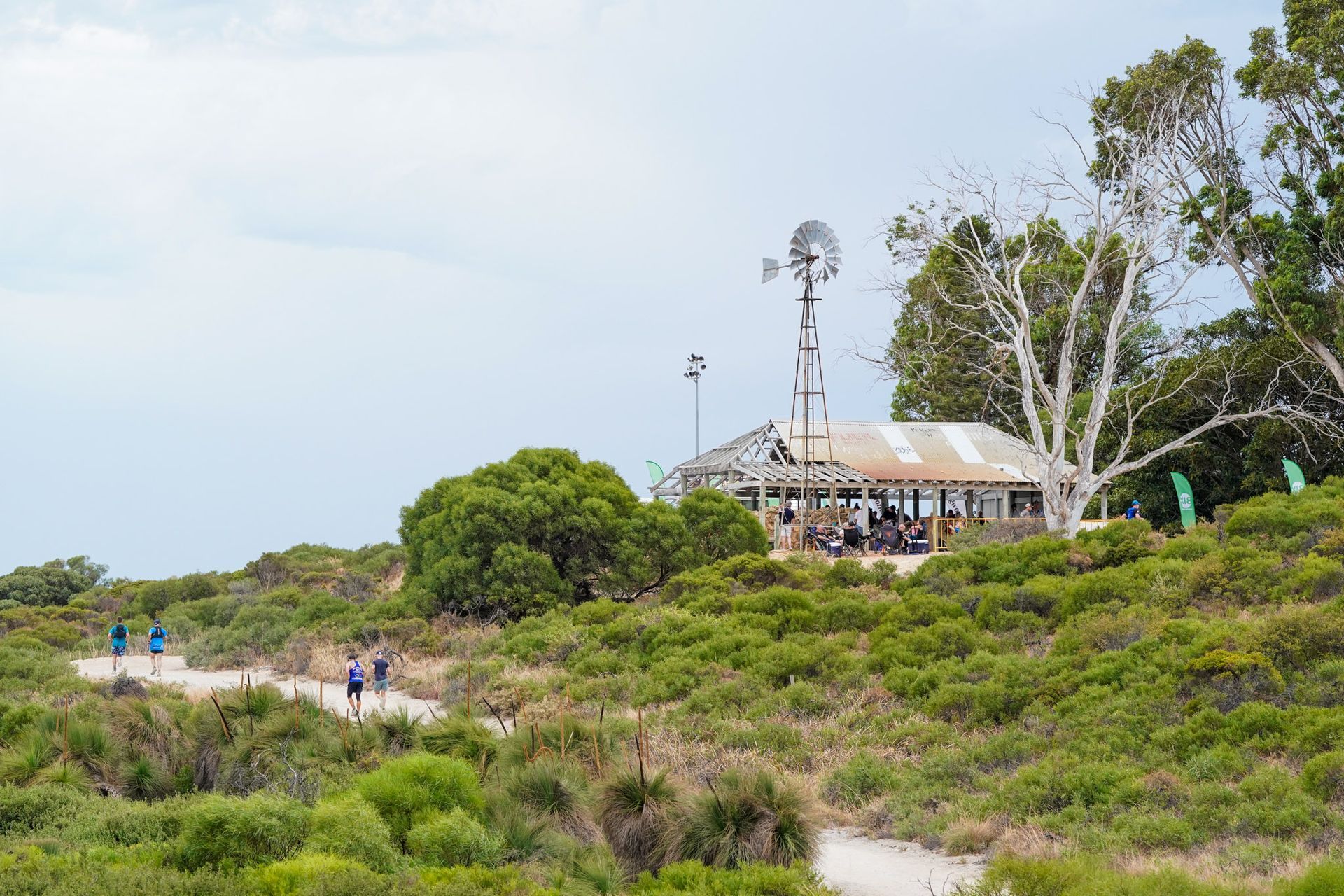
COACH’S CORNER - Developing Downhill Running Skills by James Sieber
run & strength coach james sieber covers the topic of developing your downhill running skills.

If you have ever run downhill, aggressively or cautiously, only to try and continue running but with jelly where your legs used to be, then chances are you need to practice downhill more.
Yet, how often are you intentional about your downhill running? When do you consciously practice developing your downhill running skills?
In ultra-trail events, our ability to limit the “fade” (fatigue resistance/durability) will be the primary predictor of our potential. How well aerobically trained we are, how specific our training has been, how dialled in our fuelling, hydration, and cooling strategies are, and how well we pace ourselves all contribute to our durability. Another major contributor is how efficiently we can run downhill.
When starting trail running, we often fall into two groups: those who find downhills easy and those who find them downright scary. Both groups need skill development. Few have a natural talent for technical downhill running, and being quick doesn’t necessarily mean being technically sound.
For those who find downhills intimidating or painful or assume the brace position more often than a running stance, not only do we need to become technically skilled, but also confident. To build our confidence, like treating phobias, you can take two approaches: gradual exposure or flooding, a more abrupt approach.
In this journey of developing confidence on downhills, we will all have a moment of flooding where you take a deep breath and send it. However, for most of us, if done before an initial skill development period, this would end up in a rolled ankle and a more engrained fear of downhills, so we take the gradual exposure route more often than not - this ties right back to purposeful skill development.
Why are downhills essential? Two main reasons: first, being more technically proficient will give us the confidence to run down faster while using less energy, and second, the mechanical breakdown caused by the impact of downhill running will, when not adequately conditioned, ruin the rest of our race.
Before we discuss how to run downhill effectively, we need to understand intentionality. Running down a hill isn’t enough. Intentionality involves knowing what skill you’re working on, the type of downhill, and the practice focus - skill, confidence, or speed. Following this with a period of reflection helps refine your practice and improve.
Intentional practice isn’t a one-off or something done during every run. Skill development takes frequency. Work on one key aspect per run to avoid feeling overwhelmed and to improve effectively without ruining the enjoyment of your run.
Now, onto the good part: how to run downhills
Stand tall. Running downhill, like on the roads, is about standing tall, being open at the hip, and leaning forward as confidence grows. We often fall into a seated and tense position when the terrain gets steep or uneven. Sitting back shifts your centre of gravity and will likely cause your feet to slip from under you.
Be light on your feet. If we film someone skilled at running fast over technical terrain and slow it right down, we will likely see some nearly-rolled ankles. However, they were 5 meters down the track by then, and that miss-step didn’t matter. Practising quick, light steps when each footfall matters less as you glide down the hill is how to achieve this.
Eyes up. To achieve the above, you need to look up. Looking straight down will slow you down and cause a worse line choice (the next point). Starting on less steep open trails, try looking a metre further ahead, then two and three. As this becomes more natural, transition this practice to more technical and single-track terrain.
Look where you want to go. When going downhill, the temptation is to look at everything that could hurt you, all the rocks and trees you want to avoid. This takes you right to them or at least prevents you from taking the smoothest, most effective line. Focus on where you want to go, looking for the smooth line (hint: it’s often on the side of the trail).
Stay loose. Watch any professional trail race: runners have loose arms and relaxed bodies. Their arms flail around, and their bodies look like one of those waving inflatable sales things. Keep your shoulders down, take deep breaths, and let your arms go wherever they want to help you keep your balance.
Be playful. Downhills can be exhilarating. Once you've mastered them, enjoy the flow, lightness, and freedom of running downhill with a grin.
Practice intense downhills. Running downhill isn’t just about skill - it’s a powerful training tool. Downhill demands rapid, eccentric contractions from your quads, which can leave you hobbling through the office for days afterwards. But here’s the exciting part: with repeated, intense downhill runs, that post-run soreness fades, and your legs become resilient, almost bulletproof - termed the repeated bout effect. Once you’ve practised the technique, include fast, steep downhills in training. Over a few weeks, you’ll notice faster recovery times and more durable legs, ready to tackle whatever you throw at them.
Now, it’s time to practice intentionally. Start slow, be specific, and make downhills your superpower by the time of your next adventure!









